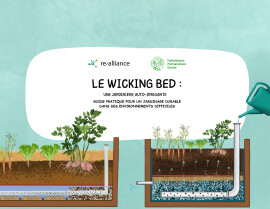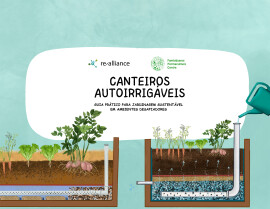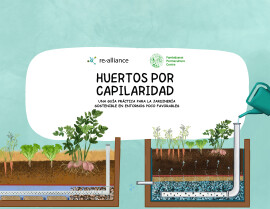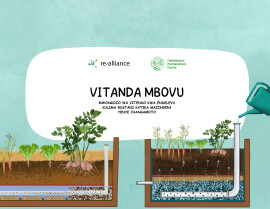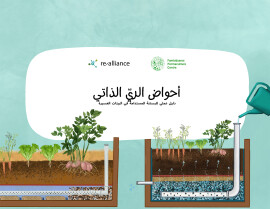
War and Famine in Africa
This study shows how internal wars are fought on a terrain of semi-subsistence economies, with the result that the traditional strategies of coping with famine are destroyed. Up to half all the people who suffer from food insecurity in Africa have been affected by war. Local conflict is a long-term and growing problem, made worse by the continents shrinking resource base. In war and famine in Africa, Mark Duffield shows how internal wars are fought on a terrain of semi-sunsistence economies, with the result that traditional strategies of coping with famine are destroyed. Populations are displaced on a massive scale, and whole ethnic groups can be destroyed. He illustrates also how war accentuates the transformation of family and gender relations which were already underway as a result of enviroeconomic stresses. The report argues that the international provision of welfare and relief is no longer adequate to deal with the consequences of conflict in Africa: the whole system is in urgent need of reform. The aim of reform would be to establish a contractual relation between recipient governments, official donors, and NGOs in terms that would be comprehensive, binding, and based upon a revision of the rules of war. This report was commissioned by Oxfam UK and Ireland from its former representative for the Sudan. It draws on case studies from South and West Sudan, and Mozambique, to illustrate the effects of local and internal conflict on civilian populations.
Published: 1991
Pages: 40
eBook: 9780855988692
: 9780855981617
| INTRODUCTION | |||
|---|---|---|---|
| The International Context | |||
| Oxfam's Experience in Africa | |||
| A Note on Methodology | |||
| FOOD INSECURITY AND THE NEW WORLD ORDER | |||
| The 'New World Order | |||
| The Position of Africa | |||
| The devision of labour | |||
| The emergence of food insecurity | |||
| COPING WITH CHANGE | |||
| The Intensification of Production | |||
| Political Overview | |||
| The Development of 'Core' and 'Peripheral' Areas | |||
| The Marginalisation of Peripheral Groups | |||
| Patterns of Social Transformation | |||
| The Effects on the Enviroment | |||
| Coping with Change | |||
| LOCAL CONFLICT | |||
| Conflict and the resources | |||
| Wars of Subsistance | |||
| Breaking the Continuity | |||
| INTERNAL CONFLICT | |||
| Connecting Local and Internal Conflict | |||
| Limitations of Convetional Understanding | |||
| War as Political Economy | |||
| The political economy of groups: the Baggara of West Sudan | |||
| The political economy of movements: the SPLA in South Sudan | |||
| The political economy of movements: the MNR in Mozambique | |||
| The logic of food denial | |||
| WAR AND FAMINE | |||
| Structural Considerations | |||
| The overall Effect of War | |||
| Some Basic Parameters | |||
| The destruction and dislocation of markets | |||
| The destruction and dislocation of subsistence agriculture | |||
| The dislocation of populations | |||
| The effects on the family | |||
| The destruction and dislocation of social infrastructure | |||
| Contribution to economic decline | |||
| THE INTERNATIONALISATION OF PUBLIC WELFARE | |||
| The Conventions of War | |||
| The Internationalisation of Public Welfare | |||
| The Case For Reform | |||
| The question of targeting | |||
| The question of access | |||
| The question of sovereignty | |||
| Oxfam's Position | |||
| Summary and Conclusion | |||
| REFERENCES. |
Food as an Instrument of War in Contemporary African Famines: A Review of the Evidence
MACRAE, JOANNA
ZWI, ANTHONY B.
Disasters, Vol. 16 (1992), Iss. 4 P.299
https://doi.org/10.1111/j.1467-7717.1992.tb00412.x [Citations: 38]The Continuing Metamorphosis of the Humanitarian Practitioner: Some New Colours for an Endangered Chameleon
SLIM, HUGO
Disasters, Vol. 19 (1995), Iss. 2 P.110
https://doi.org/10.1111/j.1467-7717.1995.tb00362.x [Citations: 37]Children's Experience of Conflict Related Emergencies: Some Implications for Relief Policy and Practice
BOYDEN, JO
Disasters, Vol. 18 (1994), Iss. 3 P.254
https://doi.org/10.1111/j.1467-7717.1994.tb00311.x [Citations: 49]Political violence, ethnic conflict, and contemporary wars: broad implications for health and social well-being
Pedersen, Duncan
Social Science & Medicine, Vol. 55 (2002), Iss. 2 P.175
https://doi.org/10.1016/S0277-9536(01)00261-1 [Citations: 257]Children and Armed Conflict in Africa
Maxted, Julia
Social Identities, Vol. 9 (2003), Iss. 1 P.51
https://doi.org/10.1080/1350463032000075335 [Citations: 11]The Palgrave Handbook of Small Arms and Conflicts in Africa
Background: Small Arms, Violent Conflicts, and Complex Emergencies in Africa—A Fatal Combination
Tar, Usman A.
2021
https://doi.org/10.1007/978-3-030-62183-4_2 [Citations: 0]The emergence of two‐tier welfare in Africa: Marginalization or an opportunity for reform?
Duffield, Mark
Public Administration and Development, Vol. 12 (1992), Iss. 2 P.139
https://doi.org/10.1002/pad.4230120203 [Citations: 1]Precision agriculture and the prospects of space strategy for food security in Africa
Amusan, Lere
Oyewole, Samuel
African Journal of Science, Technology, Innovation and Development, Vol. 15 (2023), Iss. 3 P.325
https://doi.org/10.1080/20421338.2022.2090224 [Citations: 18]Regional dimensions of conflict in the Horn of Africa
Cliffe, Lionel
Third World Quarterly, Vol. 20 (1999), Iss. 1 P.89
https://doi.org/10.1080/01436599913938 [Citations: 32]Challenging environments: Danger, resilience and the aid industry
Duffield, Mark
Security Dialogue, Vol. 43 (2012), Iss. 5 P.475
https://doi.org/10.1177/0967010612457975 [Citations: 196]
